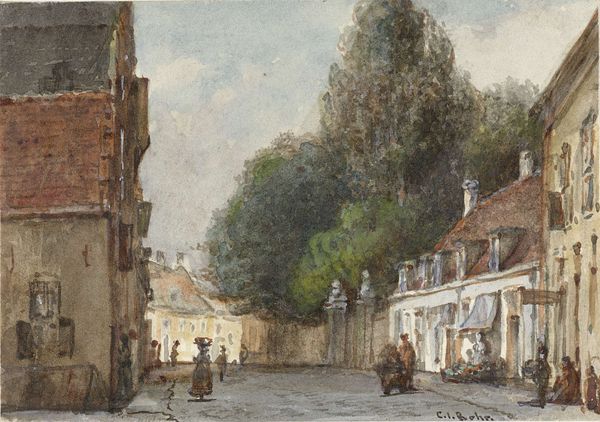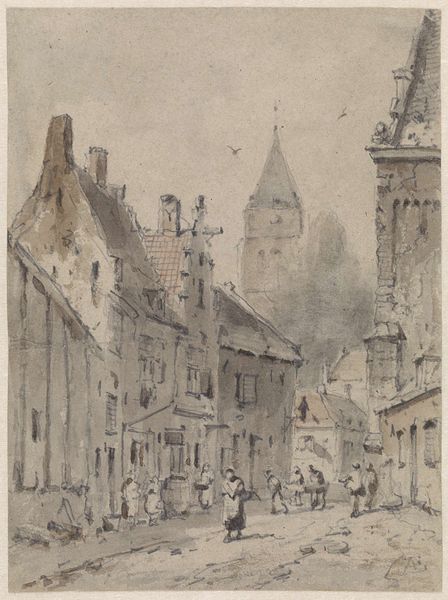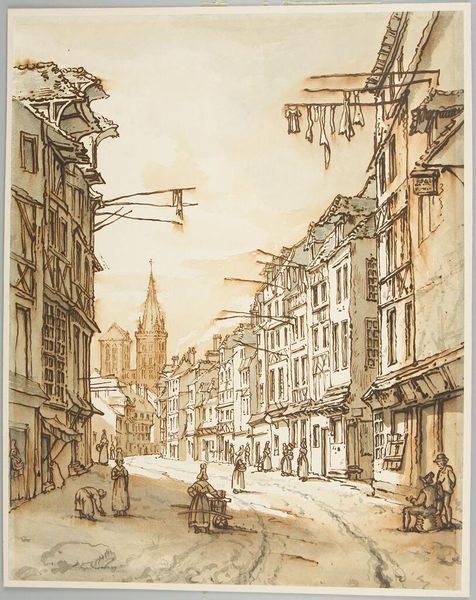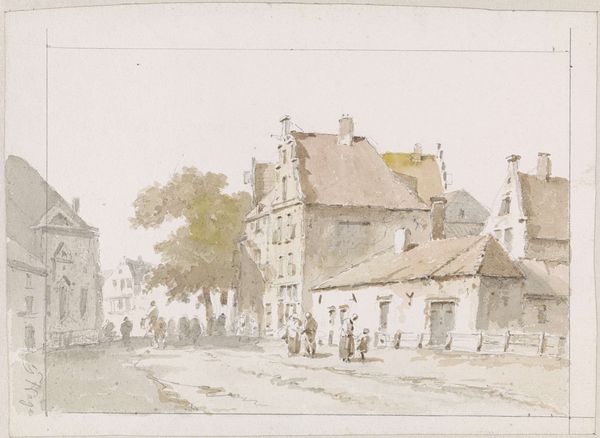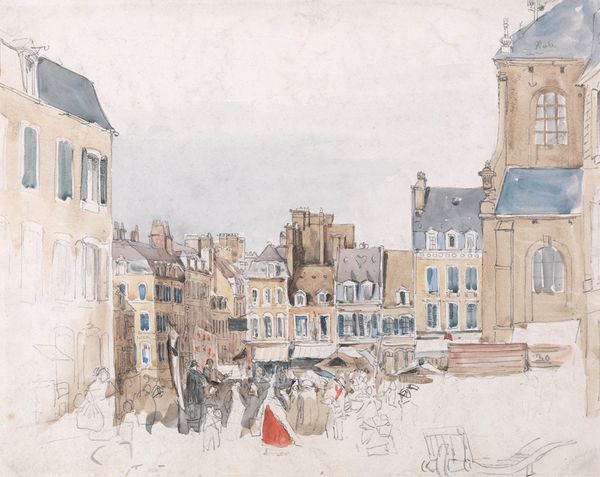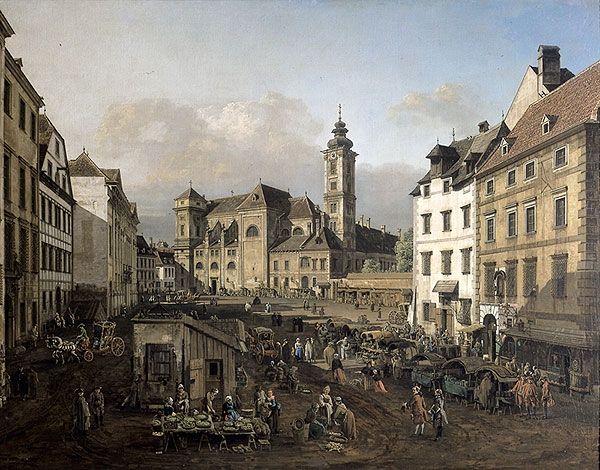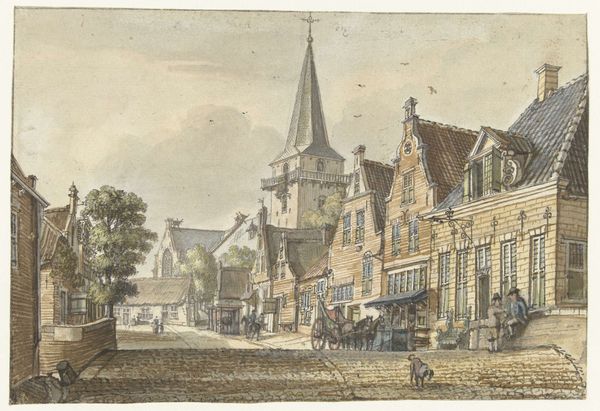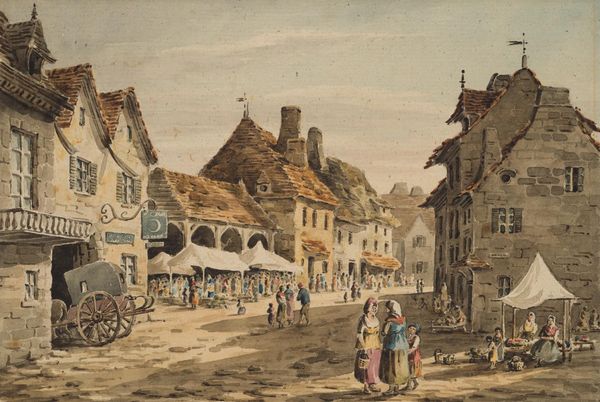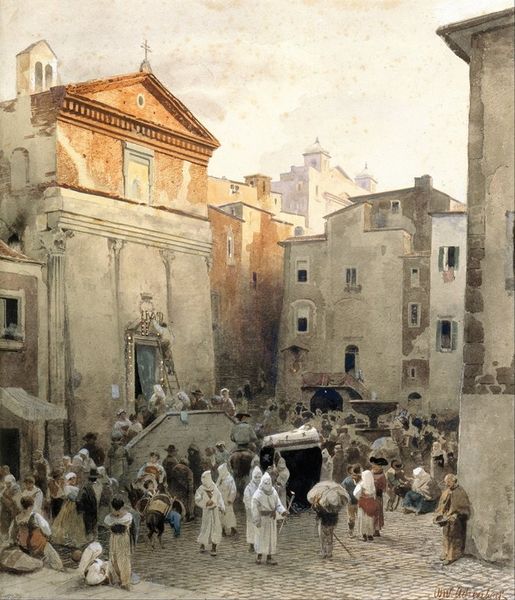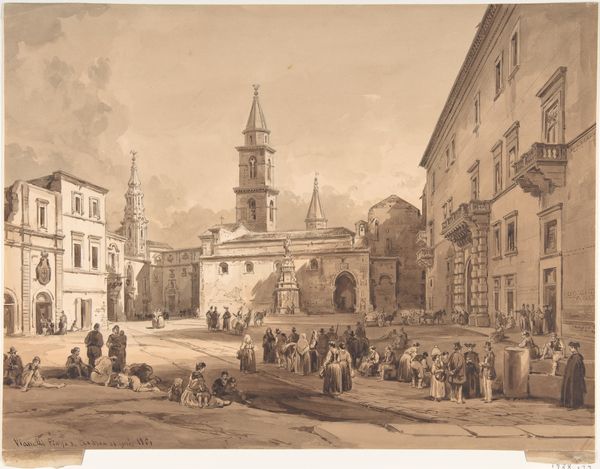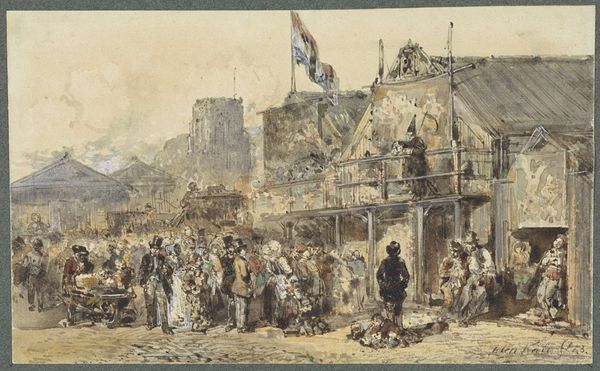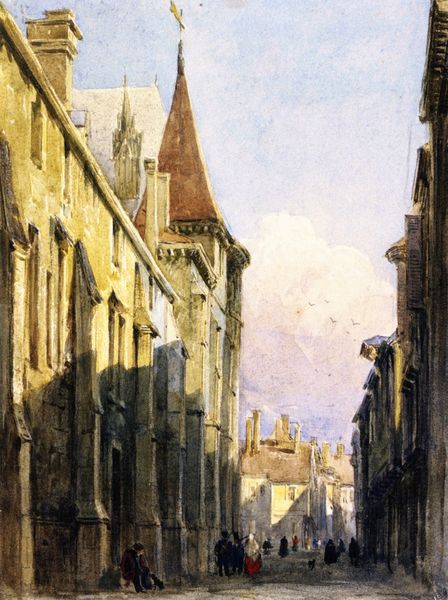
Dimensions: support: 114 x 178 mm
Copyright: CC-BY-NC-ND 4.0 DEED, Photo: Tate
Editor: This is Cheyne Walk, by an anonymous 19th-century British artist, rendered in watercolour. It depicts a bustling street scene, full of people and commerce, but there’s a certain wistful quality to the light. What do you see in this piece? Curator: The application of watercolour here speaks volumes. See how the artist uses thin washes to depict the buildings, almost dissolving the architecture. This was a period of intense urban development, so the rendering evokes the ephemeral nature of these structures and the labour involved in their construction. Editor: So, you're saying the technique itself highlights the changing landscape and the work that goes into it? Curator: Precisely. The materials, the application – they all point to the social and economic forces at play. The hazy quality also underscores the environmental impact, maybe from industry? I wonder about the pigments used, and their availability at the time, how global trade impacted artistic production. Editor: That gives me a lot to think about. I hadn’t considered the materials in relation to the broader historical context. Curator: It's all interconnected. Examining the tangible can unlock deeper understanding.

